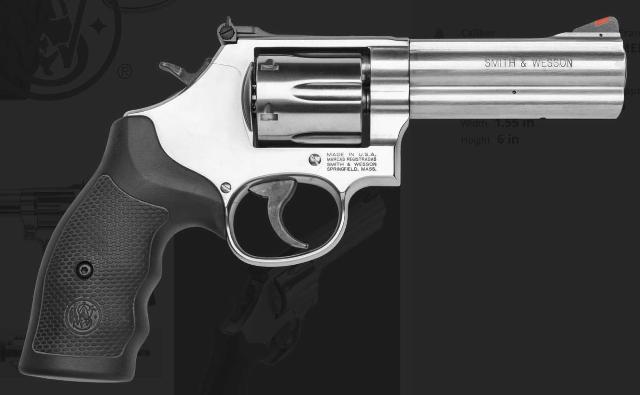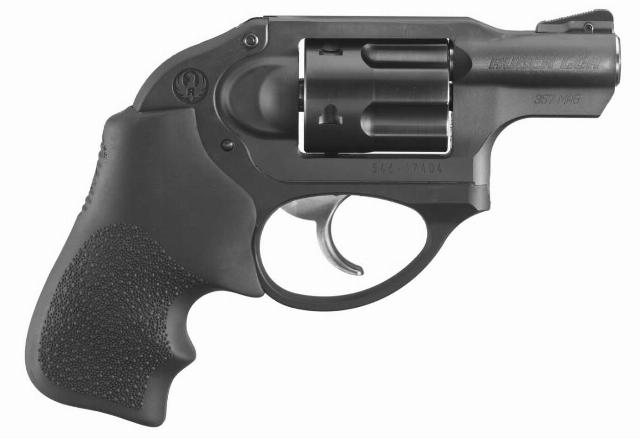.357 Magnum arguments
Among the perennial arguments in the firearm community is whether this or that gun is good for this or that application, or whether this or that caliber is best for this or that application. Arguments range from highly technical to attacks on other’s sanity, manhood and parentage. In semiautomatic pistol cartridges, the primary argument is 9mm vs .45 ACP (Automatic Colt Pistol). That argument has been, for several years, rendered largely moot as advancements in cartridge and bullet design have narrowed performance differences between the choices. The popularity, size, magazine capacity and price advantages of the 9mm ensure its popularity, while the .45 is also in no danger of disappearing from the marketplace.
A recent The Truth About Guns (TTAG)—where I used to contribute--article, asking “Is .357 Magnum Good For Self-Defense?” is really a rhetorical question. Of course it is, with some caveats.
The cartridge has been around since 1935. It’s essentially a .38 Special, but with a slightly longer case, which produces substantially greater muzzle velocity. Using bullets of the same—125 and 158 grain—weight, it produces greater energy transfer, and until the widespread adoption of semiautomatic pistols by police agencies, was, particularly with 125 grain hollow point ammunition, the cartridge of choice.
A .357 Magnum,125 grain hollow point round produces 1500 FPS muzzle velocity and 625 ft.lbs of muzzle energy, the same bullet in .38 Special produces only 900 FPS and 225 ft.lbs of muzzle energy. Velocity and energy drop off as range increases. Various authorities suggest the “average” gunfight takes place from seven to three yards, but that’s very hard to quantify. Are we talking about police shootings or citizen-involved shootings? Suffice it to say handgun encounters tend to occur at ranges where velocity and energy transfer are little changed from muzzle contact distance. TTAG notes:
However, the .357 Magnum stands out as a notable exception. Studies consistently show that it is between 5% and 15% more effective at stopping threats than these common semi-automatic pistol calibers.
Perhaps, but:
One key downside is that revolvers chambered in .357 Magnum tend to be larger, heavier and lower in capacity than semi-automatic handguns. These factors can make them less comfortable to carry, more challenging to shoot accurately under stress and less effective in extended engagements.
At my final police agency, we eventually went to Glocks in .40 S&W, but until then everyone carried the S&W 686, a beautifully made handgun. It was the only weapon authorized for on and off duty carry. The 686 is designed to handle .357 pressures for decades, and is accordingly heavy and heavily built:

Graphic: S&W Model 686, .357 Magnum
Weight also plays a critical role in managing recoil. Lighter revolvers may be easy to carry, but full-power .357 Magnum loads can produce 75% more recoil energy than the hottest 9mm loads in comparable firearms.
They do indeed. Female, smaller male, and not a few larger male officers had real trouble with the handgun. It was so big few carried it off duty—not a good thing—and recoil and muzzle blast with the 125 grain Federal cartridge were fearsome. We used to half-joke that even if you missed, the muzzle blast would incinerate the bad guy. By the time 50 rounds of duty ammo were expended on the range, virtually everyone was glad it was time to stop, and fast followup shots were beyond the capabilities of many. That in an admittedly excellent .357 handgun weighing 40.3 ounces unloaded, currently costing $979.00.

Graphic: Ruger LCR, Model 5450, .357 Magnum
The .38 Special and .357 Magnum are chambered for small revolvers, which are certainly much more concealable than a full-sized duty handgun like the 686, but have their own drawbacks. The Ruger LCR Model 5450 in .357, also an outstanding handgun, weighs only 17.1 ounces unloaded, but has only a 5-round cylinder and currently retails for $859.00. It attains that weight with state-of-the-art polymer and steel construction, but as one might imagine, muzzle blast and recoil greatly exceed that of the much heavier 686.
Regular training is essential with any gun. Daily carry .357, 125 grain, loads run around $1.40 each, or $70 per fifty. The same type of 115 grain 9mm ammo runs about $1.10 each or $55.00 per fifty. Obviously, practice ammo is cheaper, but the relative price difference remains.
As I noted in April of 2024 in Revolvers for women aren’t such a great idea, one should always choose any handgun/cartridge combination based not on cheerleading articles in the gun press, but on realistic assessments of relative strengths and weaknesses, not only of the gun/cartridge, but the shooter.
A cartridge as long-lived and successful as the .357 Magnum is appropriate for self-defense, but may not be a good choice for everyone.
Mike McDaniel is a USAF veteran, classically trained musician, Japanese and European fencer, life-long athlete, firearm instructor, retired police officer and high school and college English teacher. He is a published author and blogger. His home blog is Stately McDaniel Manor.
FOLLOW US ON
Recent Articles
- ‘Make Peace, You Fools! What Else Can You Do?’
- When Nuclear Regulation Goes Awry
- The Danger of Nothing
- A New Pope With Courage
- Not in Kansas Any More
- Democrats Dying on the Most Desolate Hills
- If She’s an Astronaut … I’m a Jet Fighter Pilot
- Is the Jihadist Trojan Horse Winning?
- Who Has the Best American Autobiography?
- This Easter, Let Us Renew Our Faith
Blog Posts
- Life discovered on a distant planet?
- The answer is not blowing in the wind
- Hillary ‘the Russia Hoaxer’ Clinton wants to imprison people for ‘propaganda’
- Rep. Jamie Raskin threatens foreign leaders who cooperate with President Trump with repercussions, 'when we come back to power — and we will'
- Maybe we need more living versions of “Hillbilly Funerals”
- A female fencer's courage is partly rewarded
- Democrats' Cloward-Piven default
- A New Mexico judge resigned over allegations that he kept a Tren de Aragua member in his home
- The Pope’s death is leading to yet more anti-Israel and anti-Trump propaganda
- Ivy League college invites antisemitic rapper onto campus
- Pope Francis, RIP
- It’s not really about Abrego Garcia
- When Oregon became Bart Jason
- Post-election lawfare; legislating from the bench
- Oregon pushes trans track






